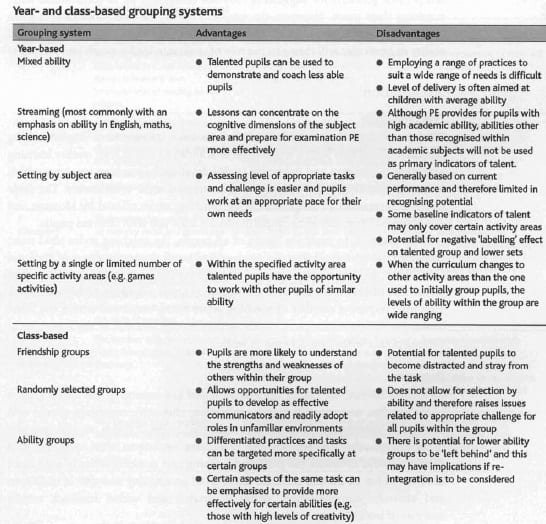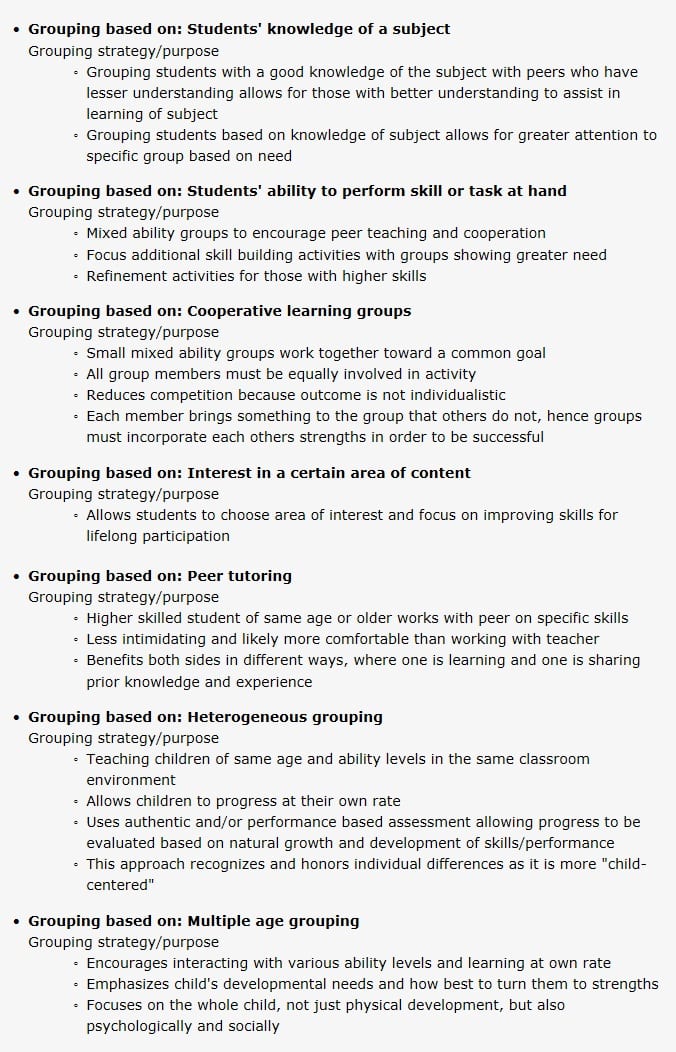Morley and Bailey (2006) state grouping is a key part for success. This enables PE participants to operate at a high level and challenge themselves and others. It is suggested this works better with equal abilities and not mixed. Freeman (1998) refers that average participants benefit from mixed grouping and specific grouping for talented participants.
Research has stated that mixed method for teaching is in decline in other subjects (Benn & Chitty, 1996). PE still exhibits mixed abilities. There are strategies on how more talented can help others, but this can have negative impacts aswell. These can be that the talented become average as they miss vital technique for their sport.
For a teacher or coach it is important to realize the importance of grouping in certain ways to enhance provision for talented athletes (Morley & Bailey, 2006)
Grouping systems
(Morley & Bailey, 2006)
(Gregory & Chapman, 2007)
The above clearly indicate different ways to sellecting groups to coach and teach. The research will be adopted to the next session on tuesday 27th November 2012.
References
BENN, C., & CHITTY, C. (1996). Thirty years on: is comprehensive education alive and well or struggling to survive? London, David Fulton Publishers.
FREEMAN, J. (1998). Educating the very able: current international research. London, Stationery Office.
Gregory, G. H., & Chapman, C. (2007). Differential instructional strategies. Thousand Oaks, CA: Corwin Press.
MORLEY, D., & BAILEY, R. (2006). Meeting the needs of your most able pupils in PE/sports. London, David Fulton.


